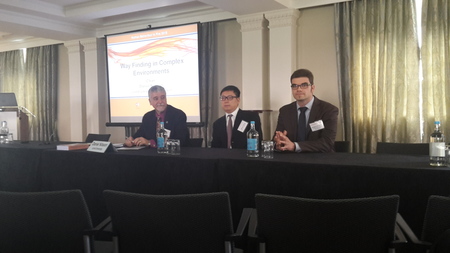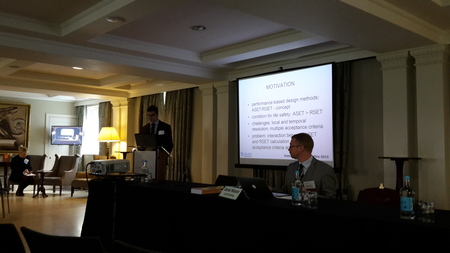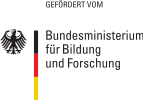Beitrag zur "Human Behavior in Fire" Konferenz
Vom 28. bis zum 30. September fand das Human Behaviour in Fire Symposium am Downing College der Universität in Cambridge statt.
Im Rahmen der Session "Wayfinding in Complex Environments" stellte Benjamin Schröder (FZJ) erste Ergebnisse aus den Arbeiten im AP 2.4 vor. Der Beitrag "Knowledge- and Perception-based Route Choice Modelling in Case of Fire" behandelt die Implementierung eines Routing-Frameworks, bei dem individuelles Wissen über eine Gebäudegeometrie und die Wahrnehmung von Rauch in die Entscheidungsfindung bei der Routenwahl einbezogen werden.
Abstract: The life safety assessment in case of fire has already been investigated in numerous publicationsand many evacuation models are capable to consider fire-relevant field quantities. Commonly, the modelling of human-fire-interaction is based on a visibility-dependent reduction of movement speeds and dose-effect-relationships for toxic or irritant fire effluents. With regards to the tactical level of evacuation models, another challenge is the modelling of individual behavioural patterns like dynamic routing strategies during fire. Experimental as well as post-incident studies imply the consideration of these aspects in coupled fire and evacuation analyses. In our work, we aim to set up a modelling framework to address these patterns based on individual knowledge about a structure as well as the perception offire-related effects. For this purpose, we present a coupled fire and evacuation analysis based on a simplifiedtest scenario. The fire-relevant field quantities are calculated with NIST's Fire Dynamics Simulator Version 6.1.2. For the evacuation simulation, we apply the research framework JuPedSim extended by a versatile routing submodel that utilises the cognitive map concept and perception modelling. Finally, the presented modelling approach is tested with a functional verification and a parameter sensitivity analysis.



